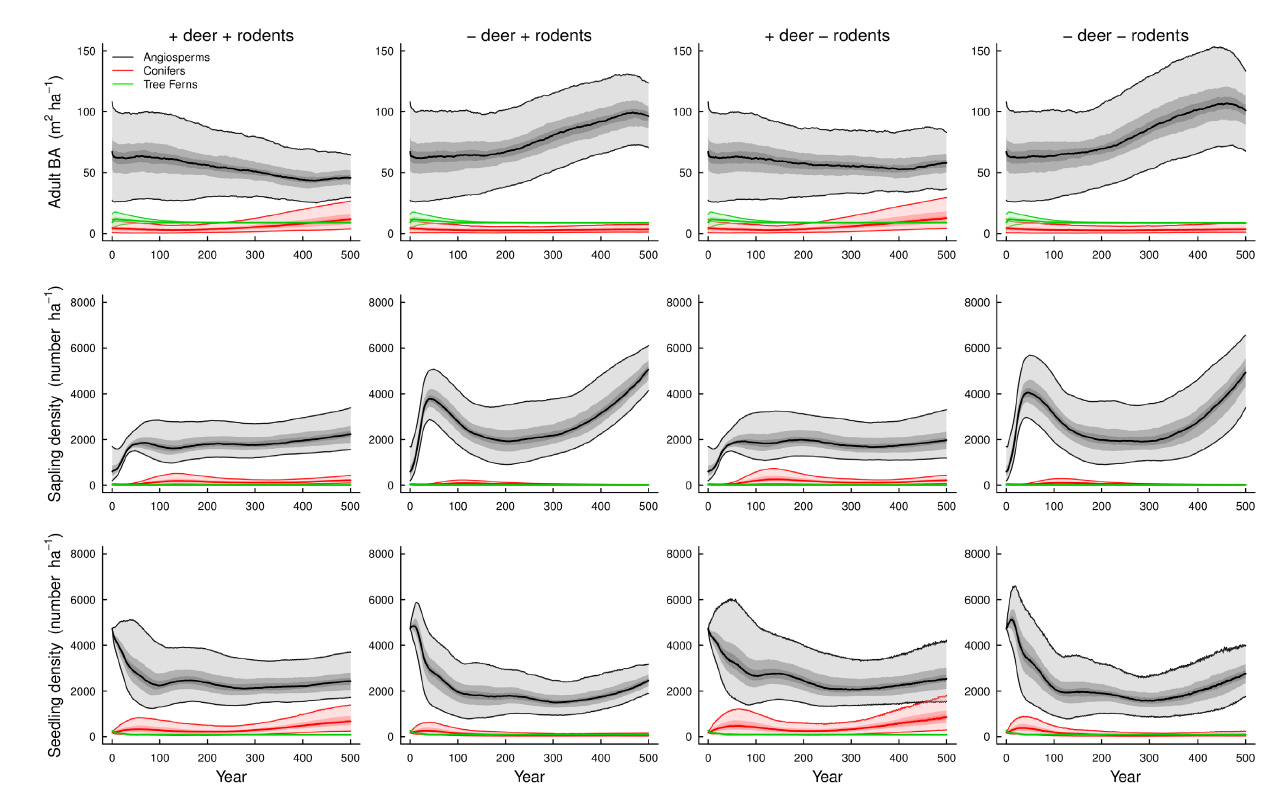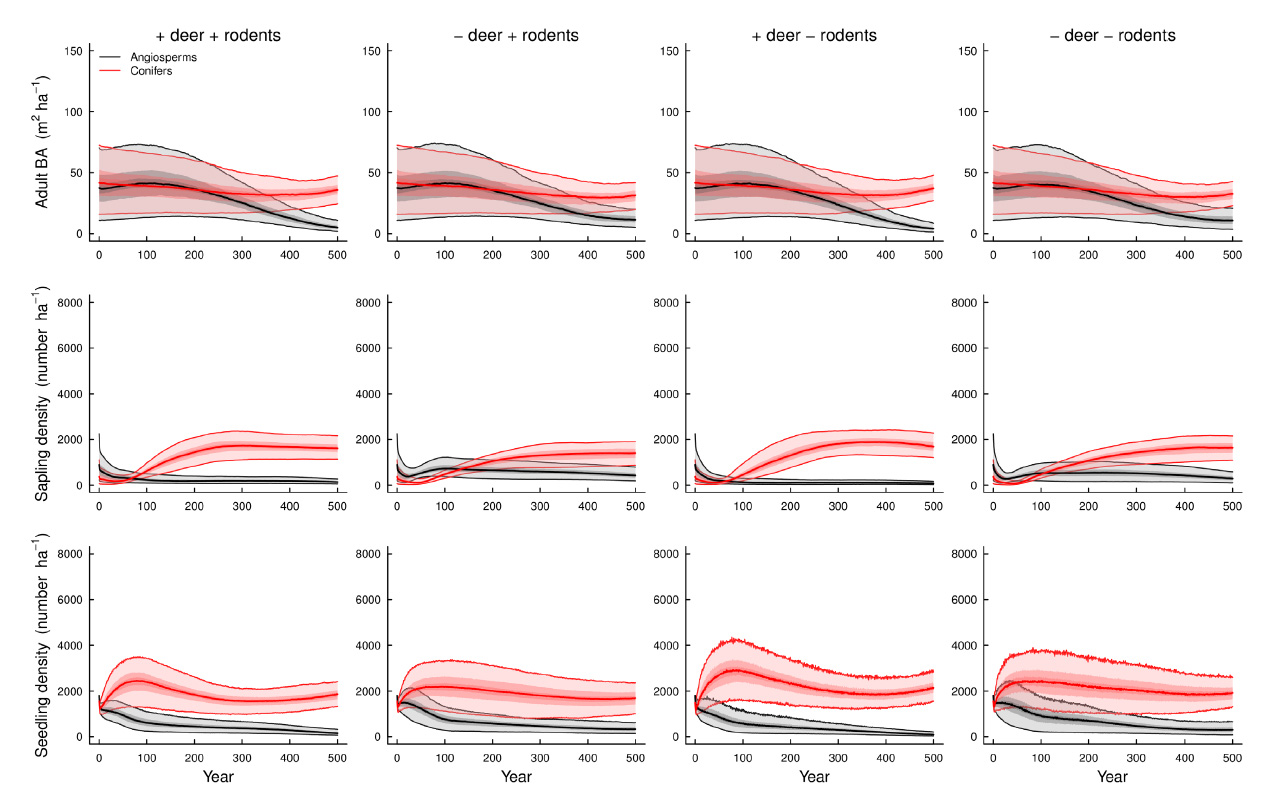
Ecological Archives M085-008-A12
David M. Forsyth, Deborah J. Wilson, Tomás A. Easdale, Georges Kuntsler, Charles D. Canham, Wendy A. Ruscoe, Elaine F. Wright, Lora Murphy, Andrew M. Gormley, Aurora Gaxiola, and David A. Coomes. 2015. Century-scale effects of invasive deer and rodents on the dynamics of forests growing on soils of contrasting fertility. Ecological Monographs 85:156–179. http://dx.doi.org/10.1890/14-0389.1
Appendix L. Figures showing predicted 500-year trends in total adult basal area, total sapling density and total seedling density of conifers and angiosperms in four herbivory scenarios for the alluvial and marine terrace forests.
The two panels of figures below show predicted 500-year changes in adult basal area (upper row), sapling density (middle row) and seedling density (lower row) for all angiosperms and all conifers for four rodent-deer herbivory scenarios in the alluvial (Fig. L1) and marine (Fig. L2) terrace forests. The four rodent-deer herbivory scenarios were: + deer + rodents (left panel), − deer + rodents (central left panel), + deer − rodents (central right panel), − deer − rodents (right panel). Each scenario was run for 500 years using a SORTIE/NZ parameter file (available for download; see Supplement) and 100 different starting conditions. Hence, each figure within a panel is a summary of data from 100 simulations at each of 500 annual time-steps, with the areas of decreasing shading represent the 40−60%, 25−75% and 2.5−97.5% quantiles. Tree ferns were present in the alluvial terrace forest (Fig. L1) but not in the marine terrace forest (Fig. L2).

Fig. L1. Predicted 500-year trends in adult basal area (BA), sapling density and seedling density for angiosperms, conifers and tree ferns in the four alluvial terrace forest herbivory scenarios. The areas of decreasing shading represent the 40−60%, 25−75% and 2.5−97.5% quantiles from 100 simulations.

Fig. L2. Predicted 500-year trends in adult basal area (BA), sapling density and seedling density for angiosperms and conifers in the four marine terrace forest herbivory scenarios. The areas of decreasing shading represent the 40−60%, 25−75% and 2.5−97.5% quantiles from 100 simulations.